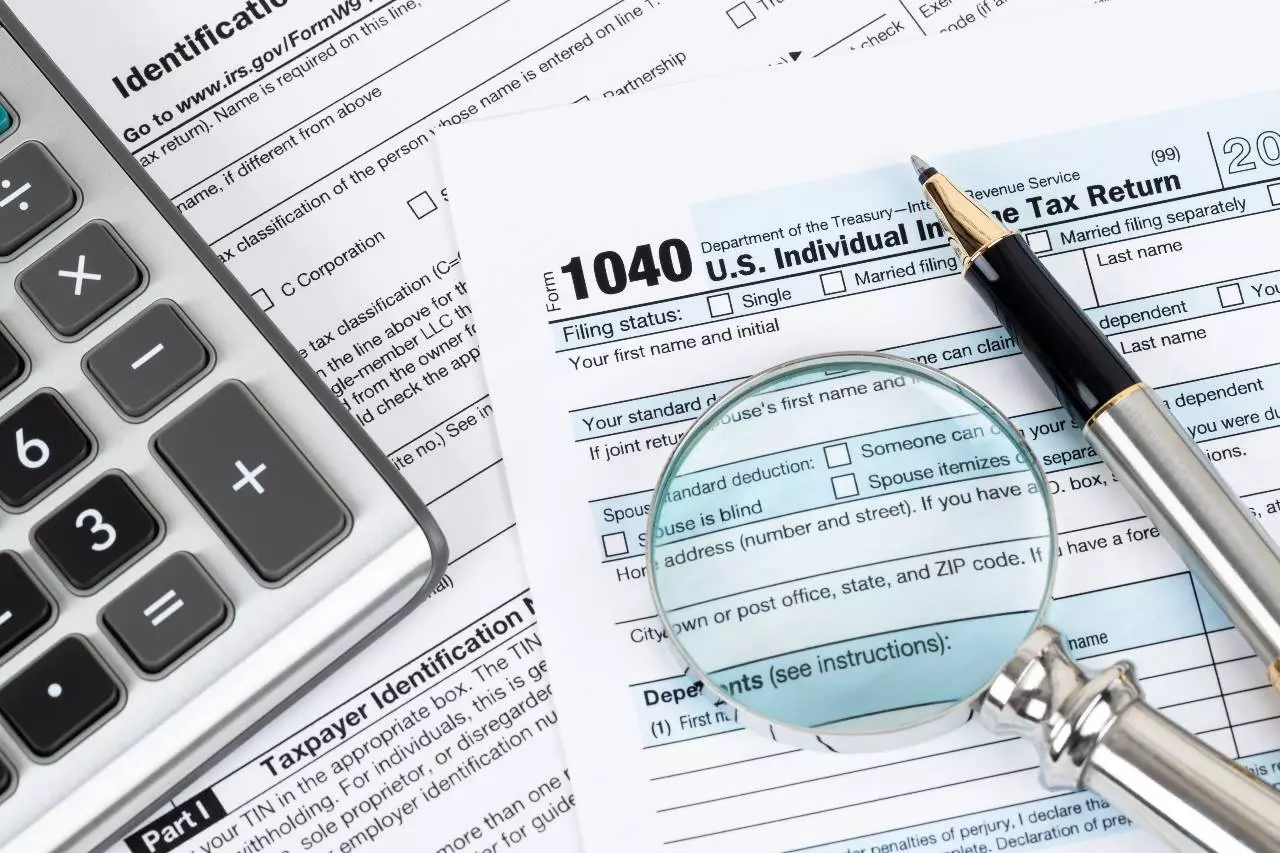401(k) vs. SIMPLE IRA: Which One You Should Choose
401(k) and SIMPLE IRAs are the most common retirement accounts offered by employers. But the decision between 401(k) vs. SIMPLE IRA is not always easy without understanding the key differences between their respective limits, contributions, and taxes.
At their core, these two plans mainly differ in their flexibility and simplicity. Additionally, both offer different contribution opportunities for both employees and employers. By weighing these two options, individuals can determine which account type best suits their long-term retirement goals.
This article will dive deeper into the two contribution plans and help you understand which of these would be a better option for you. We’ll start by looking at each of these accounts separately, then point out their main differences in an easy-to-understand way. So, let’s get right to it.
What Is a 401(k) Plan?
401(k) is a retirement plan offered only by employers. Employees direct a portion of their salary to the retirement account, while employers may also choose to contribute to the employee’s account. If the employer contributes regardless of the employee’s contribution, they are making a nonelective contribution.
These contributions are then invested in funds of the employee’s choice, but most commonly in mutual funds of stocks and bonds. The 401(k) has been tailor-made by the United States Congress to encourage Americans to save for retirement and offer a list of benefits such as tax savings.
There are two types of 401(k) plans, and the tax break depends on which type you choose:
- Traditional 401(k). With a traditional 401(k), employees do not pay taxes when they contribute to their retirement account. Instead, the funds will be taxed when the money is withdrawn.
- Roth 401(k). Conversely, according to the Roth 401(k) plan, employees pay taxes during contribution years but withdraw the funds tax-free when they retire.
With a 401(k), the employee can contribute up to $20,500 per year in 2022, while the employer can match as much they want, as long as their total contribution doesn’t surpass $61,000. For instance, an employer may match 50 cents for every dollar invested by the employee, up to a certain percentage of the salary.
Even though the 401(k) may allow employees to save more money for their retirement, setting up a 401(k) account may require some time and paperwork for the company. A typical small business can expect to pay on average $500 to $2,000 for start-up costs and an additional $5,000 for annual administrative fees.
Employers should also adhere to nondiscriminatory testing (NDT) to ensure that the company doesn’t favor highly compensated employees over others in matching contributions. Moreover, employers must file Form 5500 annually to report the plan’s details to the IRS.
What Is a SIMPLE IRA?

A Savings Incentive Match Plan for Employees (SIMPLE) IRA is an alternative retirement plan that can be established by companies with 100 or fewer employees. Therefore, it is more commonly offered by small businesses to individuals of any age who have earned at least $5,000 in any prior two years.
The biggest difference between a SIMPLE IRA and 401(k) is that the former has lower employee contribution limits and requires employers to make contributions. Employees can contribute up to $14,000 per year as of 2022. On the other hand, employers are obligated to either match up to 3% in contributions or 2% in case of nonelective contribution.
For example, if an employee earns $750,000, he may receive a matching contribution of $22,500 with the SIMPLE IRA plan (3% of $750,000). However, with the 401(k) plan, he would receive no more than $20,500 due to IRS limits.
Usually, the costs of setting up a SIMPLE IRA plan are less than those of a 401(k) plan. Most providers typically don’t charge start-up fees. At the same time, the business can expect to pay about $20 to $30 in annual administrative costs for each employee, or $2,000 to $3,000 in total, considering that the maximum number of employees can be 100.
A SIMPLE IRA is one of many kinds of other IRA plans. Alternative IRA accounts include:
- Traditional IRA
- Roth IRA
- SEP IRA
- Nondeductible IRA
- Spousal IRA
- Self-directed IRA
401(k) vs. SIMPLE IRA: Comparison
Now that you know more details about each plan, here’s an overview of the main features of 401(k)s vs. SIMPLE IRAs:
| 401(k) | SIMPLE IRA | |
| Eligible employers | Any company with one or more employees. | Companies with 100 or fewer employees. |
| Eligible employees | Employees who are at least 21 years old and have worked at least 1,000 hours at the company. | Employees who earned at least $5,000 in any prior two years and are expected to earn $5,000 in the current year. |
| Contribution Rules for Employers | Employer contribution is optional. | Contribution is mandatory. Employers should match up to 3% of the employee’s compensation or contribute 2% for nonelective contribution. |
| Contribution Limits for Employers | Maximum of $20,500 for employees below the age of 50; $27,000 for employees over 50 per year in 2022. | No limit on employer matching contributions. If using a nonelective contribution, the employer can match up to $305,000 in 2022. |
| Contribution Limits for Employees | Employees can contribute up to $20,500 or $27,000 for those aged above 50 in 2022. Total employer and employee contributions cannot exceed. $61,000 or $67,500 for those aged over 50. | Employees can contribute up to $14,000 or $17,000 for those aged over 50 in 2022. |
| Deductions and Deferrals | Employer contributions are deductible to the employer up to IRS limits. Employee contributions are usually pre-tax and tax deferred. | Employer contributions are deductible to the employer on business tax returns. Employee contributions are usually pre-tax and tax deferred. |
| Vesting (ownership of the funds) | Employee contributions are immediately vested. Employer contributions are vested gradually according to a pre-established schedule. | All contributions are 100% vested. |
| Loan Provisions | Allows loans. | No loans. |
| Investment Options | Only selected investments are possible with the employer’s and plan administrator’s assistance. | Investments are allowed through the financial institution that holds the funds. |
| Distributions | Distributions begin at the age of 72. A 10% penalty is applied for distributions made before the age of 59 and a half. | Distributions begin at the age of 72. A 25% penalty is applied for distributions made before the age of 59 and a half and within the first two years of plan participation. |
| Portability | Rollovers may be allowed according to plan provisions. | Tax-free rollovers are allowed after a two-year period. |
401(k) vs. SIMPLE IRA: How to Choose?
As an employee, you would most likely want to work for a company that offers a retirement plan with better benefits. Next, consider how much you can contribute now and how much you are ready to pay in taxes. At the same time, you should see if you meet both of these plans’ eligibility requirements.
If you still can’t wrap your head around which retirement plan is right for you, try to ask yourself these three fundamental questions below.
What Is Your Employment Status?
First, your employment status can hint at which retirement plan would be best for you. If you work for a company that provides a retirement plan, you should primarily consider your eligibility. For instance, 1,000 hours is equivalent to 125 working days. So if you’re older than 21 and have worked for your employer for about six months, you can qualify for a 401(k) that would allow you to make high contributions.
The scenario may completely change if you’re self-employed. This may likely mean that you have to set up your retirement account yourself. Of course, you can still open a 401(k) if you want to make large contributions. But keep in mind that establishing a 401(k) account costs more and requires a lot of paperwork. Alternatively, SIMPLE IRAs are easier and cheaper to set up and have looser eligibility requirements.
How Much Are You Ready to Contribute?
Next, think about how much you’re willing to contribute to your retirement fund or if you want to contribute at all.
While the 401(k) plan offers a lot of benefits, such as high contribution limits to employees, employer contribution is not compulsory. This means that your employer may choose not to contribute to your retirement account. Moreover, employers can set their own vesting terms and require employees to stay with them for a couple of years until they can claim ownership of their retirement accounts.
Conversely, employer contributions to SIMPLE IRA plans are mandatory. So if you go for this option, your employer will be obligated to either match 1% to 3% of your salary or pay a fixed 2% even if you choose not to contribute. All contributions, including the ones by the employer, are immediately 100% vested, and you gain full ownership of the funds. However, contribution limits for employees are lower than those of 401(k) plans.
As a result, if you want to contribute regardless of your employer’s decision to contribute, the 401(k) may be the right option for you. Alternatively, with a SIMPLE IRA, your maximum contribution limit will be lower, but you’ll also receive contributions from your workplace.
How Much In Taxes Are You Ready to Pay?

The last important factor you should consider is how much you’re ready to pay in taxes. 401(k) plans allow you to reduce your income taxes during your employment years. For example, if you earn $200,000 a year and contribute $20,500 to your 401(k) fund, your income taxes will be levied on the remaining $179,500.
But if you choose this option, be ready to pay taxes on withdrawal after you retire. The amount of taxes will depend on the federal tax bracket you fall in at that time. Also, if you withdraw the funds before the age of 59 and a half, you will also be required to pay a 10% early withdrawal penalty to the IRS.
Meanwhile, SIMPLE IRA contributions are also made pre-tax, meaning you can reduce your income taxes and pay them at withdrawal. However, since maximum contribution limits are less than those of a 401(k), your income taxes won’t be reduced as much as they would with a 401(k) plan. For instance, with a $200,000 salary, your taxable income will be $186,000 after contributing the maximum allowed quantity of $14,000 to a SIMPLE IRA.
If you withdraw your SIMPLE IRA funds before the age of 59 and a half, you will be subject to a 10% early withdrawal penalty. However, if you withdraw your money within the first two years of plan participation, the penalty will increase to 25%.
Final Thoughts
Choosing the right retirement plan that would maximize your retirement money is one of the most important decisions you should make in your career. By now, we hope that you have a clearer picture of the two retirement plans and which one of them would be best for you.
In conclusion, we will point out that both plans offer exceptional benefits to employees. Companies that offer 401(k) plans provide more opportunities to save money for retirement. But if you’re self-employed, you will most probably have to set up your retirement plan yourself. In this case, a SIMPLE IRA would be a more hassle-free and cheaper option.
Making a decision about which plan to choose is a responsible job. That’s why we suggest you talk to a financial or employee benefits advisor that can help you evaluate your options.
FAQ
What Is a 401(k) Plan?
401(k) is a retirement plan for savings and investments. It is only offered by employers. Employees can direct some portion of their salary to their 401(k) to build wealth for their retirement. These contributions are invested in financial securities of the employee’s choice (stocks, bonds, mutual funds, etc.).
Employers that offer a 401(k) can also choose to make contributions to their employees’ funds, although this is not mandatory. There are different types of 401(k) plans, the most common ones being traditional 401(k) and Roth 401(k), which differ in how they’re taxed.
What Is a SIMPLE IRA?
A SIMPLE IRA is another type of retirement plan that allows employees to save money now and withdraw later, usually after retirement. A SIMPLE IRA is also only offered by employers. Employers are required to make contributions, regardless of whether the employee contributes.
Is a SIMPLE IRA the Same as a Traditional IRA?

Unlike a SIMPLE IRA, a traditional IRA plan can only be established by individuals. Employers cannot match contributions if the employee has a traditional IRA account. A traditional IRA has a contribution limit of $6,000 by the employee, while the SIMPLE IRA plan allows deferment up to $14,000.
Employee contributions to a SIMPLE IRA are non-tax-deductible, meaning the contributions are subject to income tax. On the contrary, traditional IRA contributions are pre-tax, and taxes are due after the withdrawal of the funds.
What Is a Roth IRA?
Roth IRAs can also be established and funded individually, without the employer’s involvement. Contribution limits are the same as traditional IRAs. However, unlike traditional and SIMPLE IRAs, Roth IRA contributions are made after-tax, and withdrawals are tax-free.
What Is a SIMPLE 401(k)?
You might have heard that there is another retirement plan called a SIMPLE 401(k). This plan is a mix of traditional 401(k) and SIMPLE IRA plans, sharing similarities with both of them. It works mostly like a 401(k) account, but the employee’s eligibility contribution limits are the same as for a SIMPLE IRA.
According to the IRS, if you establish a SIMPLE 401(k) plan, you cannot offer other retirement plans to your employees. In addition, no nondiscriminatory testing is required for setting up a SIMPLE 401(k), but the employer can include loans as part of the features.
How Much Are the Yearly Contribution Limits for 401(k) and SIMPLE IRA Plans?
401(k) plans allow employees to contribute up to $20,500 or $27,000 if the employee is over the age of 50. Employers may choose to contribute or not. If they do, the combined contributions cannot be more than $61,000 or $67,500 for people over 50.
On the contrary, employee contribution limits for SIMPLE IRA funds are $14,000 or $17,000 for employees above 50. Employer contributions are mandatory with this type. An employer may decide to match either up to 3% or a fixed 2% of the employee’s salary in case of nonelective contributions.
What Is the Difference Between 401(k) and SIMPLE IRA Plans?
There are several areas where 401(k) and SIMPLE IRA plans differ. The three main differences are:
- Eligibility requirements. Only companies with 100 or fewer employees can establish a SIMPLE IRA plan. Employees of any age that have earned at least $5,000 in any previous two years can qualify for the plan. Meanwhile, businesses of any size can set up a 401(k) plan. The plan can be available to employees aged 21 and above that have worked at least 1,000 hours at the company.
- Employer contributions. Employer contributions are optional for 401(k) plan providers and mandatory for SIMPLE IRAs. Moreover, all contributions are immediately 100% vested in the case of SIMPLE IRAs, while ownership of 401(k) funds is acquired over time.
- Setup and maintenance costs. Setting up and running a 401(k) is usually more costly and requires a lot of paperwork, including nondiscriminatory testing and filing Form 5500. On the other hand, SIMPLE IRA is cheaper to establish and run and comes with less bureaucracy.
Table of Contents
- What Is a 401(k) Plan?
- What Is a SIMPLE IRA?
- 401(k) vs. SIMPLE IRA: Comparison
- 401(k) vs. SIMPLE IRA: How to Choose?
- What Is Your Employment Status?
- How Much Are You Ready to Contribute?
- How Much In Taxes Are You Ready to Pay?
- Final Thoughts
- FAQ
- What Is a 401(k) Plan?
- What Is a SIMPLE IRA?
- Is a SIMPLE IRA the Same as a Traditional IRA?
- What Is a Roth IRA?
- What Is a SIMPLE 401(k)?
- How Much Are the Yearly Contribution Limits for 401(k) and SIMPLE IRA Plans?
- What Is the Difference Between 401(k) and SIMPLE IRA Plans?